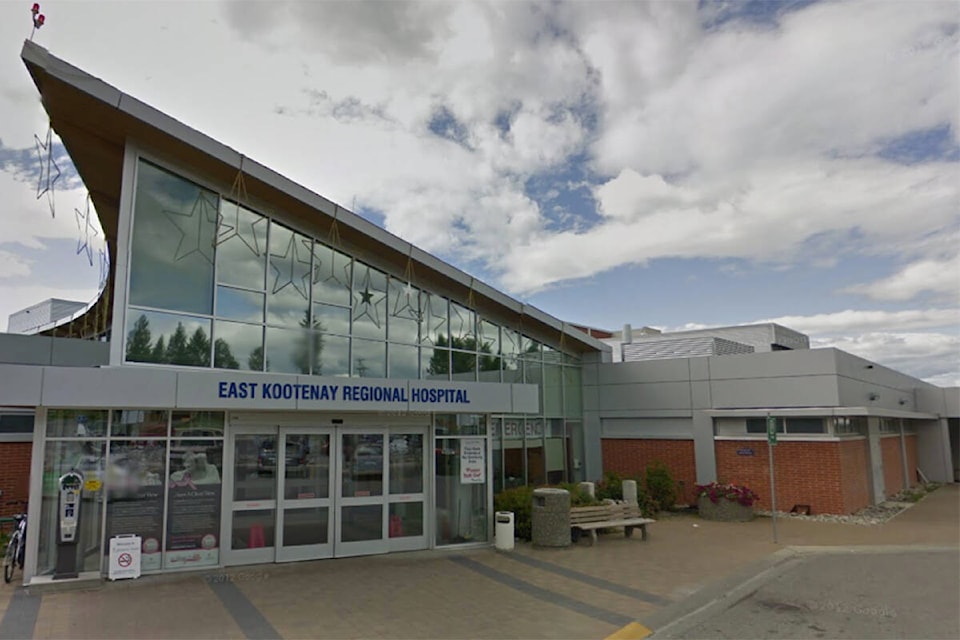The window remains open to include radiation therapy services into the scope of a new building for oncology and renal departments at the East Kootenay Regional Hospital, even though the business plan for that new building is being reviewed by the Ministry of Health
David Wilks, chair of the Kootenay East Regional Hospital District Board, is holding out hope that radiation therapy can be included in the plans, as the infrastructure required includes a vault or bunker that could be built into the base of the new building.
“I think the window is still open, but it’s political,” Wilks said. “It’s an election year, there’s a lot going on…but I also understand that the oncology and renal unit is well on it’s way, and if that is the case and we’re well on our way, here is an opportunity.”
Even if the province can’t staff it through the BC Cancer Agency, having the necessary infrastructure in place will be a key step in potentially getting radiation therapy services to Cranbrook in the future, Wilks said.
However, a delegation with BC Cancer Agency pulled out of a planned appearance at the recent hospital board meeting on May 10, according to Wilks, which was where board directors were hoping to get some feedback on the EKRH radiation therapy proposal.
Instead, the board voted to send a letter inviting BC Cancer Agency representatives to work around their own schedules to set a time for a meeting, even if it’s through video conferencing, as the hospital board meets once very three months.
Wilks said he thinks the radiation therapy proposal at EKRH has become “political.”
“We’re going to send them a letter — you pick the date. Over the next 60 days; I don’t care if its a Sunday afternoon. I don’t care when it is, we’ll be there, and we need you to answer some questions.”
Those questions include the number of patients from the East and West Kootenays who are attending Kelowna — the closest BC Cancer Agency clinic that has radiation therapy services — as well as the cost to build two vaults into a new building.
The second question should be relatively easy to answer, given that a business case for a new cancer care facility was approved in Kamloops, said Wilks.
“They have the number; don’t tell me you don’t have the number when you do,” said Wilks. “They do, that’s what bothers me more.”
Wilks noted the phrase he’s heard more often than not in conversations with the Ministry of Health is that “you’re not in the queue,” noting that the provincial government is focusing on other areas like Burnaby, Prince George and Nanaimo.
“I’m getting to the point with the province, that…can we get some grown ups in the room? And can we just have a conversation about jumping queues? About money? About numbers? That’s all I want to talk about,” said Wilks.
He suggested that the hospital district would be willing to pay for the entirety off the radiation bunker installation as health care infrastructure projects are typically cost shared 40 per cent by local taxpayers through the hospital district, and 60 per cent with the province.
He also noted a recent $15 million commitment from Teck Resources Ltd. towards the new oncology and renal building could be directed towards the construction and installation of radiation therapy infrastructure.
“I believe the electorate and the East and West Kootenays would clearly understand that if they had radiation services, along with oncology in Cranbrook, that would be the last thing that we would ever have to ask for, because then we’d have full service.
“If, in fact, that the problem is we don’t have enough oncologists or radiologists in Canada to run this, then there’s a simple solution — put more people through school to do it. Lets not keep throwing road blocks up.
“This is not fair to people that live in this region of the province, that we have to drive nine hours — one way on good roads — to go stay in Kelowna for five weeks, which is a wonderful city, don’t get me wrong, but we’re not there for those reasons, we’re there to get radiation three times a week at 20-minute intervals.”
The issue has struck a personal chord for the hospital board, as two directors have recently had to access radiation therapy treatment services in Kelowna.
Government support programs simply don’t do enough to help recoup the full costs associated with travel and accommodation for rural patients seeking radiation therapy which can typically run thousands of dollars a month, Wilks said.
“You wonder why people are now not going to Kelowna because they can’t afford it,” Wilks said. “This is wrong.”
The next hospital board meeting will be in August in Cranbrook.
